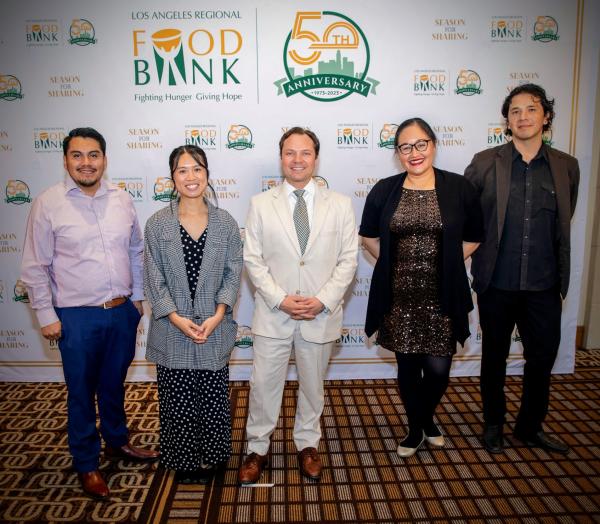KID REPORTERS’ NOTEBOOK
Fighting Hunger in Los Angeles
Claudia Gonzalez (right) and her colleague, Cristal Mendoza, hosted the food bank’s first-ever Summer Food Service Program event at a Los Angeles park.
“Food insecurity can impact anyone,” says Victoria Lasavath, marketing and communications manager for the Los Angeles Regional Food Bank. An individual facing food insecurity doesn’t have access to enough food to engage in an active and healthy lifestyle. This is often due to financial hardship.
I recently spoke with Lasavath and Claudia Gonzalez, the food bank’s children’s nutrition program manager, via Zoom. I wanted to learn more about the nonprofit organization’s mission to end hunger.
Started in 1973, the Los Angeles food bank has distributed more than 1.9 billion pounds of food in the past 50 years. Help from volunteers and local businesses enables the organization to provide meals and groceries to local families and individuals. “I’m always motivated because I see that the need is still very high,” Lasavath said.
Since the coronavirus pandemic began in 2020, more people have been showing up at food drives. According to recent surveys, food insecurity in Los Angeles (L.A.) County increased 6% between 2022 and 2023. That means 3 in 10 households don’t have enough to eat.
The L.A. food bank provides meals that don’t require extensive preparation. “It’s not true that everybody has a home, that everybody has a kitchen to cook in,” Gonzalez said.
The food bank educates the public about nutrition and advocates for government policies that address food insecurity. Another key objective is helping to reduce food waste, especially fruits and vegetables that would otherwise be thrown away. “The food bank has been able to rescue food that would have gone to a landfill and instead distributed it to people who needed it,” Lasavath said.

Victoria Lasavath (second from left) and some of her colleagues at a Los Angeles Regional Food Bank fundraiser
MAKING SURE KIDS GET ENOUGH NUTRIENTS
One in four kids in L.A. faces food insecurity. Through various programs, the food bank provides nutritious meals to as many children as possible. One food bank initiative, led by Gonzalez’s group, is called the Summer Lunch Program. It provides meals for kids when they’re on summer break. When asked about the purpose of the project, Gonzalez said: “We noticed that kids weren’t receiving the nutrients and the food resources that they had in school.”
Other programs include the Children’s Breakfast Program, the BackPack Program, and the After School Meals Program. When asked how kids can help individuals facing food insecurity in their own communities, Gonzalez suggested donating to a local food bank, volunteering, or both. “If you want to make a change,” she said, “you can always do something small and make a big difference in someone’s heart.”
Lasavath agreed, adding, “No contribution is too small.”
